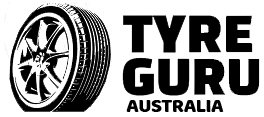How To Compare Tyres
While it can be tempting to save money and fit budget tyres, spending a little extra for quality tyres usually means improved performance and safety. Pricier tyres will also generally last longer than their cheaper counterparts, which can help to offset some of the additional cost. Car tyre prices start at around $70, with most sitting somewhere in the $100-$350 price bracket.
Once you know what size and type of tyre your car manufacturer recommends, you can start weighing up the pros and cons of the available options. Make sure you consider the following factors when comparing tyres:
Brand
A good rule of thumb is to stick to well-known, mainstream tyre companies. These brands may carry a price premium but they usually offer higher quality and back-up support if something goes wrong with their product. If someone’s trying to sell you a brand you’ve never heard of with no history or customer support network behind it, consider other options.
Performance
Choosing tyres often involves making compromises between things like grip, durability, road noise and performance. For example, soft tyres provide increased grip but wear quicker than hard tyres. Grooved tyres provide more grip on wet roads but may also have increased road noise. No one tyre will be the best at everything, so it’s up to you to decide which criteria you prioritise above all else.
Year of manufacture
Tyres are also stamped with a four-digit code to denote their year of manufacture. The first two digits indicate the week in the year the tyre was manufactured and the last two digits indicate the year – so a tyre marked 0416 was manufactured in April 2016. If any of your tyres have a three-digit code instead, this means they were manufactured in the 20th century and are long overdue for replacement.
Directional vs asymmetric
Directional tyres must be fitted to a car with their tread pattern facing a particular way. The correct rolling direction is usually indicated by an arrow on the sidewall, and fitting a tyre the wrong way can result in reduced handling performance and a shorter lifespan. Asymmetric tyres must be fitted to your car with a particular side (the one marked “outside” on the rim) facing outwards.
Reviews
From wet and dry handling performance to the quietness of the ride, there are many things it’s impossible to know about a tyre simply by looking at it. This is why it’s a good idea to check out some independent reviews from other users to find out how a particular tyre performs in the real world.
Rolling resistance
Tyre manufacturers sometimes make claims about the better fuel economy delivered by the low rolling resistance of their tyres. However, as there’s no uniform testing method used across all manufacturers to measure rolling resistance, you shouldn’t accept these claims as gospel.






